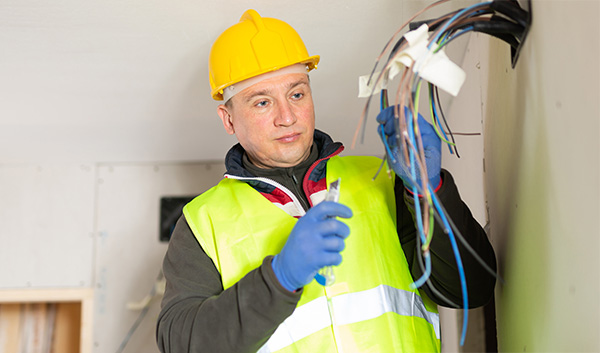Volume 28 | Issue 1
Click here to read the complete illustrated article or continue below to read the text article.
Electrocution risks in the workplace are a serious concern, particularly in the manufacturing sector, where workers are exposed to high-voltage equipment daily. While construction sites are often perceived as the most hazardous for electrical accidents due to their changing environments and temporary wiring, manufacturing facilities also present serious and unique risks to workers. Factory floors and production lines are controlled environments with established workflows, but this consistency can lead to complacency, making workers underestimate the potential electrical dangers.
The severity of this issue is clear. The manufacturing industry ranks among the top sectors with high fatalities, and 28% of electrical fatalities occur on industrial premises, underscoring the vulnerability of workers in these environments. Other industries face risk as well. According to Occupational Safety and Health Administration (OSHA) and Bureau of Labor Statistics (BLS) data compiled by the Electrical Safety Foundation International, 74% of workplace electrical fatalities occur in non-electrical occupations, showing that even workers who don’t directly handle electrical systems can be at risk.
Beyond the human toll, electrical incidents can have severe financial repercussions for businesses. According to the BLS, 2.6 million nonfatal workplace injuries and illnesses were reported in 2023, with over 900,000 cases involving days away from work. These incidents disrupt operations, reduce productivity, and lead to increased insurance premiums. Furthermore, non-compliance with OSHA and National Fire Protection Association (NFPA) 70E standards can result in substantial fines and legal liabilities.
However, electrocution risks are preventable with the right safety training, strict adherence to regulations, and proper use of personal protective equipment (PPE). PPE plays a critical role in mitigating electrical hazards and, when combined with a strong safety culture, can significantly reduce the likelihood of injuries or fatalities.
Manufacturing environments are filled with high-voltage machinery and electrical systems, which pose significant risks to workers, including arc flash injuries. Unlike construction sites, where hazards frequently change due to evolving job sites and temporary wiring, manufacturing facilities operate in a more stable and controlled setting via factory floors and production lines. However, this consistency can create a false sense of security, leading to lapses in safety practices within established workflows.
Most electrical accidents and injuries happen abruptly or unexpectedly, especially when working with or around electrical live circuits or current. This is why it’s vital to assess each work task, identifying what electrical safety is required that might help lower the risk factors of an incident occurring with having the proper protective equipment.
One of the most common causes of electrical injuries in manufacturing is improper Lockout/ Tagout (LOTO) procedures. LOTO violations have led to severe and sometimes fatal incidents where machines were unexpectedly energized during maintenance. Even experienced workers may bypass safety protocols to speed up operations, increasing the risk of electrocution.
Additionally, equipment failures can expose workers to live electrical parts. If machinery malfunctions without warning, employees may inadvertently come into contact with hazardous voltages, leading to severe injuries or fatalities. These risks make it essential for manufacturers to enforce stringent electrical safety measures, including the use of appropriate PPE.
Preparation is the first step in prevention. The following best practices can help ensure safety when working with or around electricity.

A risk assessment should include:
By proactively identifying these risks, manufacturers can implement preventive measures that minimize the likelihood of accidents and ensure workers are adequately protected.
Comprehensive electrical and LOTO training
Circuit protection measures
Avoiding overloaded circuits
Using the right equipment
Adopting safe work practices
By implementing these practices, manufacturers can build a culture of safety that prioritizes hazard awareness and proactive risk mitigation.
Electrocution risks in manufacturing are a serious concern, but they’re preventable with the right combination of safety protocols and personal protective equipment. A proactive approach that includes conducting risk assessments, selecting appropriate PPE, and implementing comprehensive safety programs can significantly reduce the likelihood of electrical injuries and fatalities. By fostering a strong safety culture, manufacturers can protect their workers, improve operational efficiency, and ensure compliance with regulatory standards.

About the Author:
Randy Dombrowski is the Director of Safety Services for Sentry Insurance. Sentry provides insurance and risk management solutions to manufacturing businesses throughout the country, helping companies maintain safer workplaces and reduce liability risks.
In this episode, I sat down with Beejan Giga, Director | Partner and Caleb Emerson, Senior Results Manager at Carpedia International. We discussed the insights behind their recent Industry Today article, “Thinking Three Moves Ahead” and together we explored how manufacturers can plan more strategically, align with their suppliers, and build the operational discipline needed to support intentional, sustainable growth. It was a conversation packed with practical perspectives on navigating a fast-changing industry landscape.